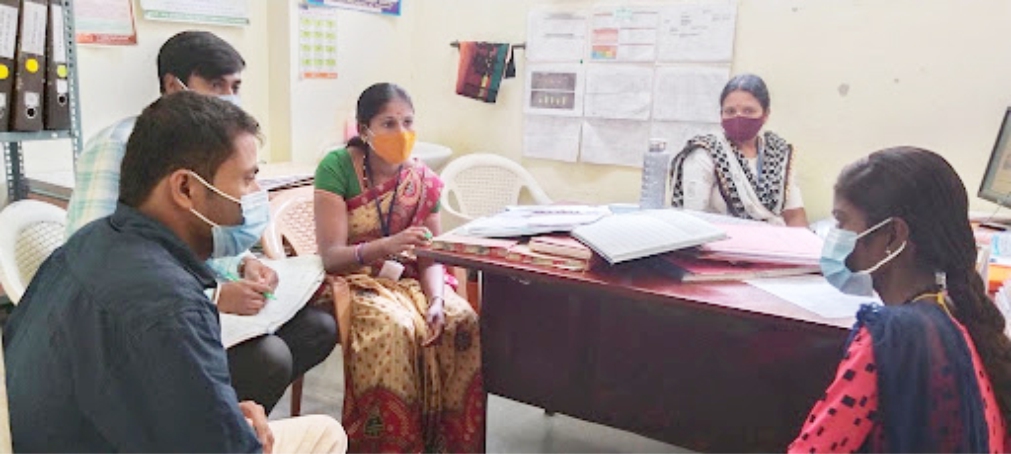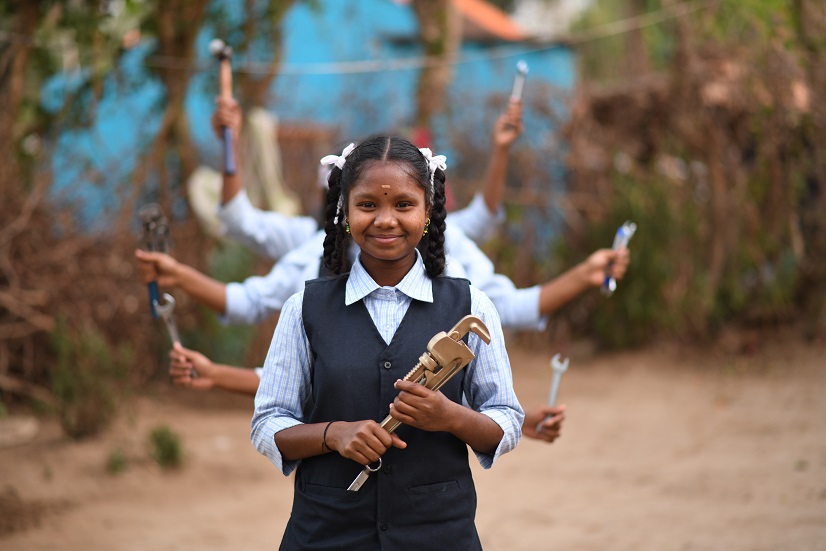National Tuberculosis Elimination Program (NTEP)
Started in 2003
Saragur, H D Kote
Building Human &
Social Capital
Family Centric
Approach
Complementing Institution & Community based interventions
Decrease mortality rate, control MDR TB conversion cases, control TB spread and increase cure rate in tribal and non tribal population
Tuberculosis Control Program
India has one of the highest rates of incidence of TB in the world and so it is no surprise that it is seen more amongst tribals due to several reasons of ignorance and unavailability of timely diagnosis, care and treatment. SVYM has been addressing the challenge of tuberculosis in the region through multiple initiatives.
The organisation focuses mainly on the tribal population of the H D Kote and Saragur Taluk in Mysuru District, covering 119 tribal colonies, and the rural population within 4 km reach from Vivekananda Memorial Hospital, reaching a population of roughly 100,000 rural and 18000 tribals comprising forest based and indigenous tribal communities like Jenu Kuruba (granted the status of being a particularly vulnerable tribal group (PVTG) by the Govt. of India).
The SVYM’s Vivekananda Memorial Hospital manages a DMC (Designated Microscopy Centre) under the NTEP – National Tuberculosis Elimination Program.
In addition, the program engages the tribal community members through a complementing institution and community based approach. SVYM’s rural hospital, Vivekananda Memorial Hospital provides institutional care from outpatient to specially created isolated ICU Units for critically ill TB patients. The Mobile outreach program of SVYM runs many mobile health units that work as the extended arms of the Tuberculosis Control Program, playing a crucial role in patient follow up, medicine supply, nutritional support, WASH awareness and promotive and preventive behaviour change communication.
Regular TB camps conducted by the organisation are proactive steps to stem the spread of Tuberculosis in the high risk tribal belts of H D Kote. SVYM’s Community Radio – Janadhwani broadcasts programs about tuberculosis awareness strengthening the fight against infection with communication.
These focused efforts are to address the migranting trends of the tribals who would move two or three times in a year to neighbouring states looking for work. To ensure adherence to treatment, a DOTS provider is identified in every tribal hamlet (hadi).
TB Control Model
- Awareness Generation
- Early Diagnosis through institution based and community outreach
- DOTS, referral and rigorous follow up
- Community Capacity Building for System Strengthening
A multifaceted and inclusive approach
Like for every chronic or long term disease, one must see the person in the patient and address wider socio-economic and political determinants of his or her health. The De-Addiction Program comes into action to tackle cases of individuals with TB being addicted to smoking and chewing tobacco, alcohol and other narcotics.
Employment and income generation opportunities through vocational and livelihood training for the patient and family members – extended by SVYM’s SEEP – Socio-Economic Empowerment Program ensures support for the family with already depleted resources, set on the right path. In some cases, the family members have been employed by SVYM.
The cross referrals between the Integrated Counseling and Testing Centre at VMH and the NTEP programs ensure screening of TB patients for HIV and vice versa.
A concerted effort
The unique challenges of poor adherence and the huge burden of undetected infections, make tuberculosis a major public health challenge, which is further getting complex due to emergence of drug resistance. This places a huge challenge in terms of patient management, as well as program administration, which we are addressing through concerted efforts of all agencies including, the Govt., corporate, trust and foundations and like minded partners.
SVYM was able to achieve a TB Cure Rate of 83% in 2021-22.
Localisation of SDGs
Realising Global and National Health Goals at the grassroots, SVYM is working with a like minded partner to eliminate TB and make the Gram Panchayath of B Metekere TB Free.
A TB Camp held at B Matakere, a village with predominant tribal population near Saragur Town
Key Impact
100,000
rural and tribal popluation reached for TB Care and Control
83%
Tuberculosis Cure Rate achieved in high risk tribal belts of H D Kote in 2021-22
1300+
Indigenous tribals screened in 2021-22
Retaining focus on long-term health goals
1314 Tribals screened for TB. 107 detected positive. Patients initiated on DOTS at Vivekananda Memorial Hospital and referred to other centres
Early detection, free treatment, awareness and screening camps have greatly reduced the burden of TB in tribal communities in H D Kote and Saragur taluk
Outcomes that demonstrate the strength of community health programs even during Pandemic
Treatment success rate comparable to leading developed nations
IMPACT STORY

Persistence against resistance
Radika, an 18-year-old girl from Nemmanahalli Hadi in the H.D Kote taluk, arrived with a fever and breathlessness. She tested positive for tuberculosis on December 15, 2021. While gathering information, we discovered that she was diagnosed with TB in 2019 and her father had also been infected.
She was initiated on TB treatment and the doctor recommended a strict food regimen and regular followup. Family screening and counselling were also carried out.
On December 16, 2021, the doctor recommended a thoracic scan, but Radika’s family couldn’t afford it. The
Yoghaskhema Samithi supported her through Patient Support Fund. Due to her deteriorating condition, she was transferred to the Emergency Ward after two days. Later, she was moved to the isolation ward on December 21, 2021. A pint of blood was also given to her. She was advised to be moved to PKTB hospital in Mysore, but she and her family refused to leave and insisted on staying in VMH to receive her medication.
On January 20, 2022, the physicians recommended that she could be discharged with the oxygen ventilator, but because they did not have a power facility at home, they remained in the hospital.
The SVYM team assisted the family in obtaining electricity for their home. She was discharged on January 27, 2022, and the hospital team continued to monitor her progress. Mamatha from the counselling department paid a visit to Radika’s home and provided her with medications following a brief health check.
Her health progressively improved, and she came to the hospital for regular check-ups on March 8, 2022,
and March 19, 2022. She is now able to support herself without the use of an oxygen ventilator. The health facilitators kept a constant check on her and she was completely cured of TB in June 2022.
Stories of Change


Meet the first generation STEM students
VTCL Girls are breaking the stereotypes associated with tribal girls taking up technical streams by becoming the very first generation in their families to continue education in Science, Technology, Engineering & Mathematics (STEM).

